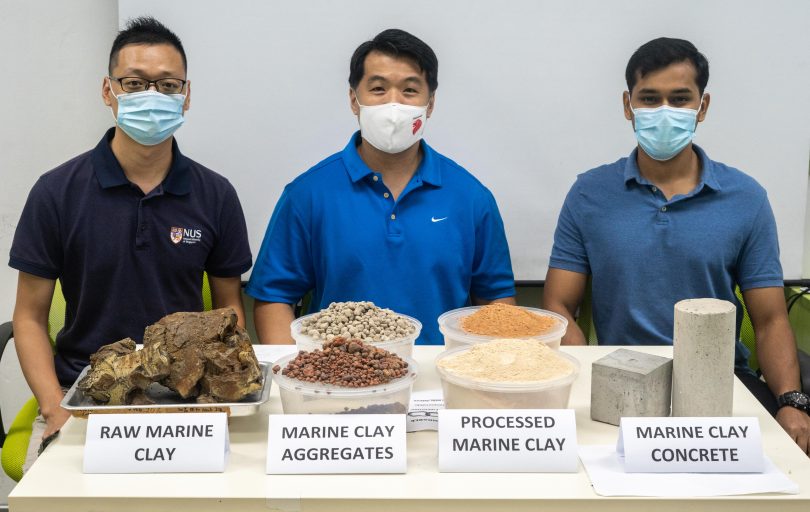Singapore, 22 April 2021 – A team of researchers led by Associate Professor Pang Sze Dai from the Centre for Advanced Materials and Structures at National University of Singapore (NUS) Civil and Environmental Engineering, has been focusing their efforts on developing Greener concretes.
In their study, the research team showed that they could drastically reduce the amount of sand needed in the concrete mixture by using a common clay material that can easily be obtained as waste from excavation works.
The researchers first obtained excavated waste clay from construction sites in Singapore. The waste clay was heated to 700°C to activate it and enhance the bonding ability. The activated clay was used to replace up to half the fine sand powder typically used in concrete. The researchers were then able to produce ultra-high-performance concrete (UHPC)—an incredibly strong type of concrete that can reduce the size of the structural elements, and potentially reduce the amount of concrete used.
Read: Building Bridges with Ultra-High-Performance Concrete (UHPC)
Replacing the fine sand powder is triply advantageous as this material is expensive, has a large carbon footprint, and could be carcinogenic as it contains silica. In addition, the NUS team also found that replacing part of the sand filler with activated waste clay did not have a significant effect on the strength of the UHPC.
Associate Professor Pang explained, “Our discovery not only reduces the consumption of valuable resources but also promotes a circular economy with the utilisation of waste clay. It opens an avenue to transform this waste into a potential resource. Globally, low-grade clay is abundant. Its multi-faceted utilisation in concrete as fillers can not only help curtail the carbon footprint of concrete but also reduce the cost of concrete production.”
– Construction+ Online
Source: NUS

 Malaysia
Malaysia Hong Kong
Hong Kong Indonesia
Indonesia Tiếng Việt
Tiếng Việt ประเทศไทย
ประเทศไทย










